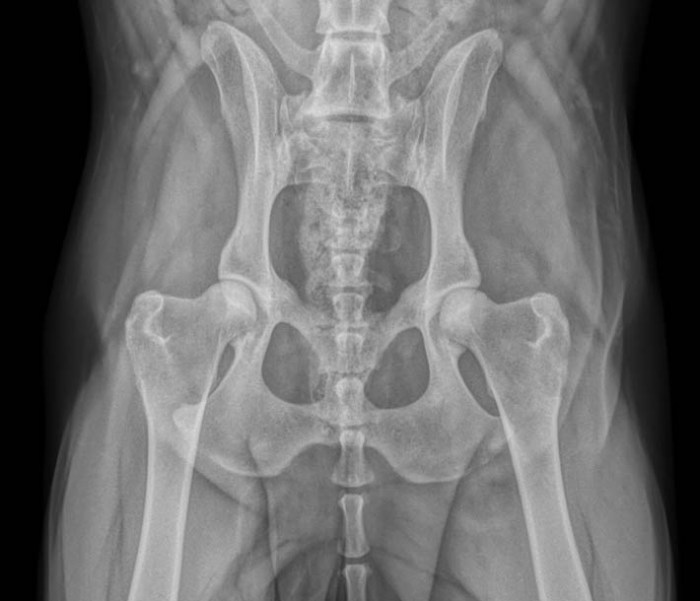Does pets best insurance cover hip dysplasia – Hip dysplasia is a debilitating condition affecting many breeds of dogs, causing significant pain and potentially requiring extensive veterinary care. The financial burden of treating hip dysplasia can be substantial, making pet insurance a crucial consideration for pet owners. This comprehensive guide explores Pets Best pet insurance and its coverage of hip dysplasia, addressing common questions and concerns.
Understanding Hip Dysplasia in Dogs
Canine hip dysplasia (CHD) is a hereditary condition where the hip joint doesn’t develop properly. The ball and socket joint of the hip becomes loose and unstable, leading to pain, lameness, and arthritis. Symptoms can range from mild discomfort to severe crippling pain, depending on the severity of the dysplasia. Breeds predisposed to hip dysplasia include German Shepherds, Golden Retrievers, Labrador Retrievers, and many others.
Early detection and management are crucial to mitigating the long-term effects.
Symptoms of Hip Dysplasia
- Limping or lameness, particularly in the hind legs
- Stiffness, especially after rest or exercise
- Difficulty rising or jumping
- Muscle atrophy in the hindquarters
- Pain on palpation of the hip joint
- Reduced range of motion in the hip
- A clicking or grinding sound in the hip joint
Diagnosis and Treatment of Hip Dysplasia
Veterinarians typically diagnose hip dysplasia through a physical examination, X-rays, and sometimes advanced imaging techniques. Treatment options vary depending on the severity of the condition and the dog’s age and overall health. They can include:
- Non-surgical treatments: Weight management, physical therapy, pain medication (NSAIDs), and supplements.
- Surgical treatments: These range from femoral head ostectomy (FHO), where the head of the femur is removed, to total hip replacement (THR), a more complex and costly procedure.
Pets Best Insurance and Hip Dysplasia Coverage
Pets Best offers various pet insurance plans, and the coverage for hip dysplasia will depend on the specific policy chosen. It’s crucial to carefully review your policy documents to understand the specifics of your coverage. Generally, Pets Best will cover a portion of the veterinary costs associated with diagnosing and treating hip dysplasia, but there are important factors to consider:
What Pets Best Typically Covers:
- Diagnostic testing: X-rays, blood tests, and other diagnostic procedures to confirm the diagnosis of hip dysplasia.
- Medical treatments: Pain management medications, physical therapy, and other non-surgical treatments.
- Surgical procedures: Depending on your plan and policy details, Pets Best may cover a portion of the costs for surgeries such as FHO or THR. However, there might be limitations on the reimbursement amount or pre-authorization requirements.
What Pets Best May Not Cover (or May Have Limitations On):, Does pets best insurance cover hip dysplasia
- Pre-existing conditions: Hip dysplasia diagnosed before the policy’s effective date is typically considered a pre-existing condition and won’t be covered. This is a standard exclusion across most pet insurance providers.
- Breed predispositions: While Pets Best doesn’t exclude breeds prone to hip dysplasia, they might still assess the risk based on the breed and adjust the premiums accordingly.
- Deductibles and co-pays: Like most insurance plans, Pets Best has deductibles (the amount you pay before coverage kicks in) and co-pays (your share of the cost after the deductible is met). These can significantly impact your out-of-pocket expenses.
- Annual or lifetime limits: Check your policy for any limitations on the total amount Pets Best will reimburse for hip dysplasia treatment over a year or the lifetime of your pet.
Choosing the Right Pets Best Plan for Hip Dysplasia Coverage
Selecting the appropriate Pets Best plan requires careful consideration of your budget and your pet’s health needs. Higher premium plans typically offer more comprehensive coverage, including higher reimbursement percentages and lower deductibles. It’s recommended to compare different plans and choose one that balances affordability with the level of protection you need. Contacting Pets Best directly or speaking with an independent insurance broker can help you make an informed decision.
Frequently Asked Questions (FAQ)
- Q: Does Pets Best cover hip dysplasia surgery? A: Pets Best may cover a portion of hip dysplasia surgery costs, but it depends on your specific plan and policy. Pre-authorization may be required, and there might be reimbursement limits.
- Q: Will Pets Best cover hip dysplasia if it’s a pre-existing condition? A: No, pre-existing conditions are generally not covered by pet insurance, including hip dysplasia diagnosed before your policy’s start date.
- Q: How much will Pets Best cover for hip dysplasia treatment? A: The amount covered varies greatly depending on your plan, the type of treatment, and the deductible and co-pay amounts. Review your policy documents for detailed information.
- Q: What are the waiting periods for hip dysplasia coverage? A: Pets Best, like other providers, typically has waiting periods before coverage begins for certain conditions, including hip dysplasia. This waiting period ensures that the pet wasn’t already showing symptoms before the policy started.
- Q: What if my dog develops hip dysplasia after my policy starts? A: If your dog develops hip dysplasia after the policy start date and the waiting period has passed, you should be able to file a claim for covered treatments.
s:: Does Pets Best Insurance Cover Hip Dysplasia
Pets Best insurance, hip dysplasia, canine hip dysplasia, CHD, dog hip dysplasia, pet insurance coverage, pet insurance claims, veterinary costs, dog health insurance, pet insurance comparison, FHO surgery, THR surgery, pre-existing conditions, pet insurance waiting periods, dog breeds prone to hip dysplasia, German Shepherd hip dysplasia, Golden Retriever hip dysplasia, Labrador Retriever hip dysplasia.

Source: petnotifications.com
References:
While specific Pets Best policy details are best obtained directly from their website, general information on canine hip dysplasia can be found at:
- American Kennel Club (AKC) on Canine Hip Dysplasia
- Orthopedic Foundation for Animals (OFA)
- (Add other reputable veterinary or pet health websites as needed)
Call to Action
Protect your furry friend from the financial burden of unexpected illnesses. Get a free quote from Pets Best today and ensure your dog receives the best possible care, regardless of the cost. Click here to learn more and get started!

Source: handicappedpets.com
General Inquiries
What constitutes “pre-existing conditions” regarding hip dysplasia coverage?
Pre-existing conditions generally refer to any signs or symptoms of hip dysplasia that existed before your policy’s effective date. This could include a veterinarian’s diagnosis, x-ray findings, or even behavioral indications of hip problems.
Does Pets Best offer different levels of coverage for hip dysplasia?
Yes, Pets Best typically offers various coverage levels, each with different reimbursement percentages and annual limits. Higher coverage levels generally result in greater financial protection.
How do I file a claim for hip dysplasia treatment?
The claims process usually involves submitting your veterinarian’s bills and other relevant documentation to Pets Best through their online portal or by mail. Specific instructions are Artikeld in your policy documents.

Source: upstatevet.com
Can I appeal a denied claim related to hip dysplasia?
Yes, Pets Best typically has an appeals process Artikeld in their policy documents. You should review this process carefully and provide any additional supporting documentation that might strengthen your appeal.
